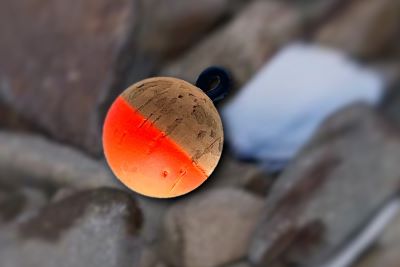When fly fishing, indicators get lost all of the time. On some popular trout streams, the banks seem to be littered with little round balls of foam and especially the stick on foam pads.
There is already enough plastic waste littering our rivers and lakes, and I always prefer a more environmentally friendly product than one made entirely of plastic.
Fortunately, for us fly fishermen. There are several excellent indicators made from natural products.
In this article, I will discuss my favorite three environmentally friendly fly fishing indicators.
The first indicator I want to discuss is the CorQs
CorQ Strike Indicator
The CorQs is a traditional ball style indicator, but unlike the competition, it is not made out of foam or hard plastic. It is actually made out of natural cork. The same natural material is found in wine bottle closures and in rod handles.
Cork is naturally very lightweight and buoyant. They are actually lighter than a comparable size foam indicator. In my testing, they float just as well, if not better than the synthetic competition.
The lightness of the cork makes them easy to cast, and they land relatively gently. A smaller splash is less likely to spook fish. I personally favor the 1/2inch side when fishing in clear conditions.
The top of each indicator is typically painted in a high viability color. I personally find them very visible, and due to the lightness very sensitive making it easier to detect slight takes.
The bottom half of the indicator is natural cork, having a natural appearance could make it less likely to spook wary fish.
They are very easy to install, just thread the leader through the rubber o ring and secure it in place. I will attach a video below which shows how it is done. Once installed, it is a quick and easy process to move them along the line.
The indicator does set slightly off center, which can cause a slight amount of turbulence when casting on windy days. In saying that, it is less noticeable than the likes of the Air-lock or Thingamabobbers indicators that also set off to the side.
All CorQs indicators are made in Colorado USA. I have seen the same indicators sold in both CorQ and Orvis retail packaging. The only difference is the branding, the indicators are the same. CorQ indicators are also available on amazon.
Yarn and wool indicators
Next, I will discuss the wool or yarn indicator. When fishing yarn indicators I prefer to use wool over any synthetic alternatives. Wool is great, it is sheep hair so is 100% biodegradable.
Yarn is probably the oldest indicator, it has been used for centuries. It floats well, casts like a feather, and is sensitive enough to detect even the lightest of takes.
Most store brought yarn is made from washed and dyed wool, but wool straight from a sheep’s back also works just fine. The natural oil and large surface areas make them extremely buoyant.
Clean wool also floats but it floats better with a coating of water repellent to help maintain buoyancy.
The most environmentally friendly way to attach a wool indicator is with a simple knot. I use the Open Loop Indicator knot. It does take a few seconds to tie and can be time consuming to move the yarn to a different location, but the biggest advantage is that it requires no additional tools or material.
If you prefer a more adjustable connection, then take a look at the New Zealand Strike indicator tool (amazon link). It does make attaching and repositioning a yarn indicator faster. Although, the indicator is attached with a short plastic sleeve which is easy to lose.
Over on my indicator buying guide I discuss yarn in more detail.
Hopper Dropper – Using a dry as an indicator
Sometimes, the best option is simply not to use a dedicated indicator but just hung the nymph beneath a dry fly.
I suppose dry flies are as natural or synthetic as the tier wants them to be. But it is impossible to fly fish without a fly, so they are an essential piece of kit.
For more information (Complete with diagrams) on how to tie and fish the hopper dropper (Dry and nymph) rig check my article here

